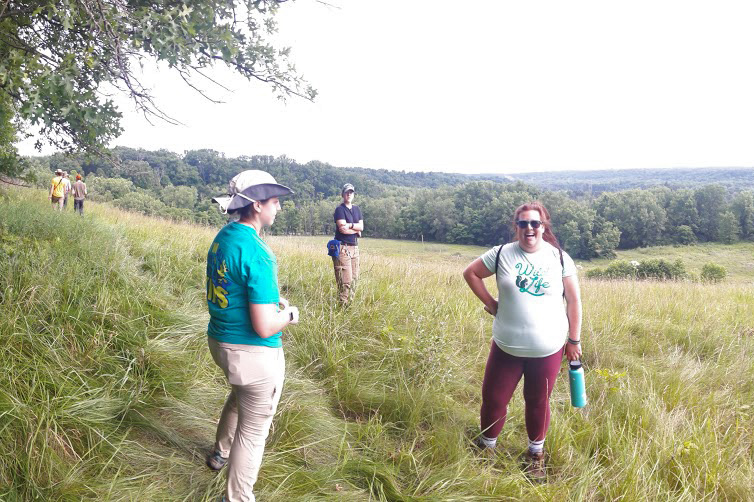Insects, big data and a passion for open science launch a rewarding career
Christie Bahlai shares how her entomology research and connections made as an MSU postdoc have contributed to work honored with a National Science Foundation early-career award.

Postdoctoral researchers are critical contributors to Michigan State University’s (MSU) research, bringing experience and often fresh insight. Christie Bahlai, an assistant professor at Kent State University, was recently selected for a National Science Foundation (NSF) early-career award. Bahlai, a computational ecologist, earned degrees at the University of Guelph before joining University Distinguished Professor Doug Landis’ lab and the Kellogg Biological Station Long-Term Ecological Research network as a postdoc in 2012.
What led you to study entomology, systems and data?
I was into nature as a kid, but never thought of it as a field. Instead, my undergraduate major was physics and I was a “middle of the road” student, which didn’t feel right after excelling as a high school student. I knew that science was where I wanted to be, so I found a job in Rebecca Hallett’s entomology lab working on pea leafminers. The lab was researching the pest’s many host plant preferences to understand choice, and I just loved it. Suddenly, I could see how things fit together in a system and how in studying a system, you could peel off parts of a problem and get a better understanding of the biology and potentially solve a problem effecting growers, people.
I also did an undergraduate thesis on host plant interactions with a parasitoid wasp and was invited by another entomology professor, Mark Sears, to begin my master’s degree studying puzzling behavior by ladybeetles, Harmonia axyridis, and their interactions with soybean aphid. In 2001, a cloud of soybean aphids famously shut down a Toronto Blue Jays baseball game. The new pest aphid arrived on farms and understanding ladybeetle predation and behavior in a lot of settings became important. Sears let me explore. I did behavioral, population and overwintering projects. I rejoined Rebecca Hallett’s lab for my PhD working on soybean aphid and community level predation and got to have my first experience teaching a chemical ecology class.
Tell us about the NSF early-career grant.
These awards are intended to support early-career faculty to grow their research and teaching program as they move into tenure. My concept is the culmination of everything I’ve done bringing together computational ecology, population and insect ecology to address insect decline. If everyone has access to the same data about insects, why is there a raging debate about insect decline? There’s a human deciding what data goes in at every data point in a model. It conflicts with the idea that you can always come up with a strict numerical answer. My project is about studying and honoring that human element in quantitative ecology. I’m developing tools to evaluate how reliable a conclusion would be based on the window of time chosen by the user and whether we can pull apart multiple sources of variation and critically interrogate what is really changing in the data.

How does your work impact people’s lives?
Many people are uncomfortable with numbers. People are especially uncomfortable with variation. But natural systems are variable. I’m developing curriculum and have a podcast about demystifying numbers. It’s my mission to preach the good word about natural variability. If we embrace that, we can learn so much more.
How did your postdoc at MSU contribute to where you are today?
I had no idea before working with Doug Landis on NSF’s Long Term Ecological Research (LTER) network that data could be scaled up through a collaboration of people working over decades. I’m interested in long term patterns and the data connectivity made me feel very at home in the LTER network. I continue as an investigator with MSU’s Kellogg Biological Station LTER today, where we keep asking what can we find out next?
Also during my postdoc, I was awarded a Mozilla Science fellowship for people working toward the goal of expanding access to advocacy, education and advancing open science. It gave me space to infiltrate my work with open science and gave me a global network. Many of the guests on my podcast are people from all over the world who I met through the fellowship.
What do you know today that you wish you’d known earlier?
Embrace variability in data (and life!). It’s real, natural and beautiful. Variability is what tells the most interesting stories.



 Print
Print Email
Email






